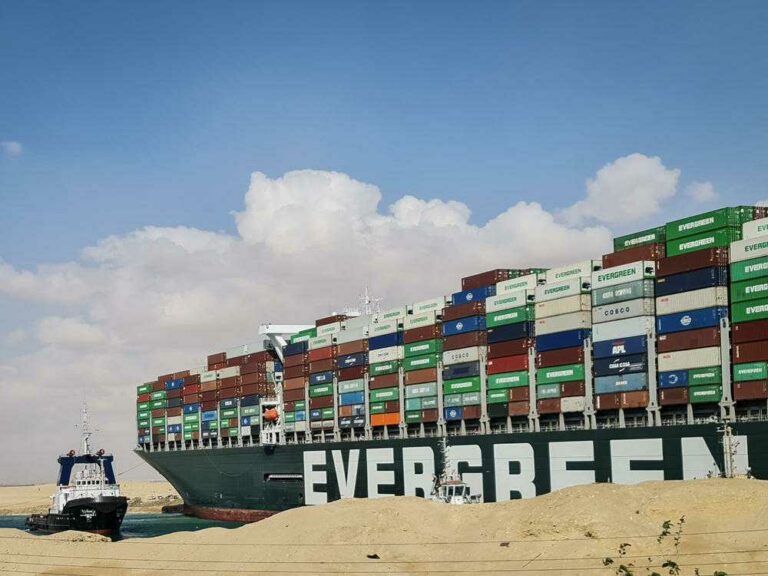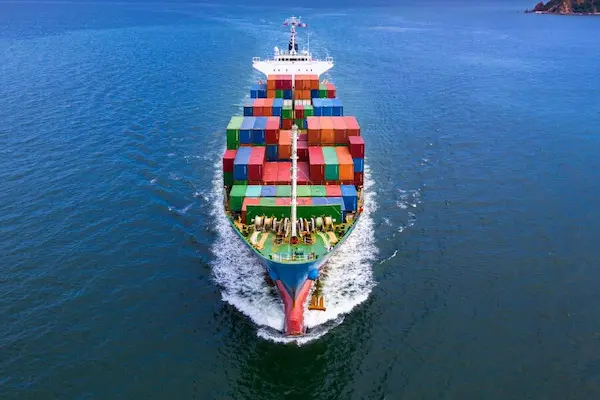Russia Ukraine Crisis: New strains on global supply chains
Russia’s invasion of Ukraine has quickly developed into a humanitarian crisis. While disruptions in business cannot compare to human tragedy, the impact of the conflict is causing a domino effect in more aspects than one. The crisis is plaguing global trade by triggering an extensive supply chain disruption. In an increasingly globalised and interconnected supply chain, the Russia Ukraine crisis will have an overwhelming impact on global supply chains for the months to come.
The Black Sea facing the most severe impact:
Since the Russia Ukraine crisis unfolded, hundreds of bulk carriers have been diverted away from the Black Sea. Several more are waiting at the port and the sea to unload their cargoes. With major ports in the area shut down and the movement of goods coming to a halt, the world’s second-largest grain exporting region has essentially come to a standstill. The affected Russian and Ukrainian ports are major hubs for wheat and corn.
Additionally, leading shipping lines including MSC, Maersk and CMA CGM have already announced that they have suspended all bookings to and from Russia until further notice, citing safety concerns. More carriers and logistics companies have joined shipping lines in announcing suspensions of services to Russia.
Container build-ups add to port congestion woes:
Nearly 70% of Ukraine’s imports and exports are done by sea, of which the Port of Odessa is responsible for about three-quarters. Up to 7,000 containers destined for Odessa are diverted to Constanta, Romania. These containers that were to be delivered to Ukrainian ports are unloaded every day in Romanian Black Sea port of Constanta since the start of Russian invasion in Ukraine and the full blockade of all its Black and Azov Sea ports.
Container build-ups due to disruption on the Black Sea will aggravate port congestion at the region’s ports and exacerbate the global container supply chain crisis. The Port of Constanța is now experiencing congestion as it struggles to handle vessels previously destined for Ukraine’s Odessa port.
Here’s GoComet’s real-time port congestion data providing featured insights into the situation:
Are you looking for alternate routes, best freight rates and visibility into your shipments? We’d be happy to help.
Modal shift to stress ocean shipping more:
Train services through Russia have become almost impossible, and borders with the EU are closed. Airfreight capacity has also been reduced due to air space closure across Russia and Europe. Given the situation, the demand for ocean shipping has increased due to a modal shift, particularly in the Asia-Europe trade. This has added more stress to the already frail supply chains.
According to experts, the Russia Ukraine crisis will add to the stretched nature of global container supply chains, bringing more inflation, disruption and delays.
Shipper’s nightmare — Ocean freight to increase again:
In recent weeks, the aforementioned modal shift has had a tremendous impact on ocean freights. At the beginning of 2022, ocean freight rates remained 8-9 times higher than the pre-pandemic rates. While shippers were trying their best to navigate the crisis of soaring freight costs, the Russian invasion of Ukraine has further increased the rates. Spot rates are climbing up, and the prices continue to be volatile.
Experts have warned that the conflict between Russia and Ukraine may triple the ocean freight rate from the current levels.
Source: Drewry supply chain advisors
Western sanctions on Russia: Can supply chains handle it?
The western sanctions on Russia have already started impacting global supply chains and businesses. A recent report by Dun & Bradstreet says:
- The ripple effects of U.S., U.K. and EU sanctions on Russian companies further cripple an already weakened global supply chain.
- There are 14,745 Tier 1 and 7.6M Tier 2 supplier relationships with Russian entities globally.
Source: Dun & Bradstreet
- At least 374,000 businesses worldwide rely on Russian suppliers. Over 90% of these businesses are based in the U.S. Similarly, at least 241,000 businesses across the world rely on Ukrainian suppliers. Over 93% of these businesses are based in the U.S. Other countries with impacted supply chains include Canada, Italy, Australia, China, and Brazil.
- At least 390 businesses globally have critical suppliers in Russia. The top five countries with critical suppliers in Russia are the U.S., China, India, Japan, and the UAE. There are at least 210 businesses globally with critical suppliers in Ukraine. The top five countries with the most exposure are the U.S., Mexico, China, Brazil, and Canada.
- Twenty-five countries have a high dependency on Russia and Ukraine for various commodities.
- Disruption of trade routes, freight costs, inaccessibility of critical raw materials could derail economic growth and add to inflationary pressure.
- If the conflict continues, the availability of critical raw materials such as natural gas, crude oil, metals, and agri-commodities would be jeopardised, and transportation costs would increase. In addition, businesses worldwide may experience further supply chain bottlenecks and increased pricing pressures.
What are experts advising supply chain leaders?
While there is no endgame in sight, experts advise supply chain leaders to embrace data and technology to build agile supply chains. At this juncture, more visibility into freight rate procurement, proactive delay notifications for shipments, communication with various stakeholders and most importantly, high-quality data insights to mitigate risks faster can make a huge difference to supply chain professionals.
Please feel free to reach out to us to build your supply chain resilience during these testing times.
You may also be interested in reading our recent blog: Russia–Ukraine crisis: Major shipping lines won’t sail to and from Russia.






